Synthetic Spectrum Package for IDL
Design, supervision, contact:
Dr. Joseph Harrington
326 Space Sciences Building
Cornell University
Ithaca, NY 14853-6801
jh@oobleck.astro.cornell.edu
Programmers:
John Dermody (Cornell) Version 0.1 16 Sep 03
OVERVIEW:
This set of functions will create a synthetic spectrum and
corresponding synthetic sky frame for your use testing spectrum
extraction programs. It has many available options for you to modify,
so you can test different aspects of your program. Its modules
simulate sky lines, spatial resolution, spectral resolution, optical
distortions, cosmic rays, read noise, photon noise, and bad pixels
to an object spectrum created from a black body curve and random
emission and absorption lines. The default values simulate moderate
levels of all effects.
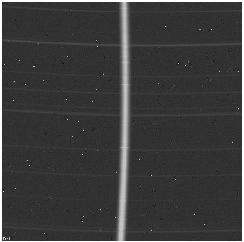
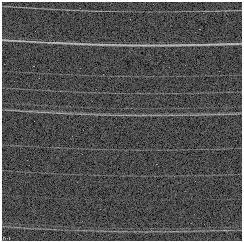
The object and sky frames from a default run
INSTALLATION:
To install, copy the synthspec directory into your idl function
directory, where it can been seen by the IDL program.
To test if your installation is correct, change to a directory where
you can write files, and run testsynthspec. If the following six lines
appear on your screen, things are working normally:
Creating simple test files
Creating default test files
PASS - Simple Object Frame
PASS - Simple Sky Frame
PASS - Default Object Frame
PASS - Default Sky Frame
BASIC USE:
IDL> objframe = synthspec()
Synthspec returns a 2D data array containing a computed
spectrum that has been processed to simulate a number of sky
and instrumental effects. The object spectrum is the Planck
function with random emission and absorption line superposed.
Sky lines from an OH database appear on a flat background.
Spectral and spatial spreading are simulated through
convolution with a Gaussian function. Imperfect object trace
and bent sky lines are simulated with sine functions. These
data are slightly rotated to simulate imperfect chip
alignment, and random cosmic rays, bad pixels, Poisson signal
noise, and read noise are added.
Each of these steps is a module that can be controlled or turned off by
keywords to synthspec, as described below. In addition, the user can
specifiy certain inputs (levels, spectrum, bad pixels, etc.) and has
access to several internal variables of the package.
SKY FRAME AND HEADERS:
If the package is being used for infrared astronomy, the first
argument of synthspec will contain a corresponding sky frame:
IDL> objframe = synthspec(skyframe)
This 2D array is the same size as objframe, and contains the same
simulations as objframe. It does not contain the object spectrum, and
its random cosmic rays and noise values are generated seperatly.
Information from the creation of the array is saved in the FITS header
info for the sky frame and the object frame. To access the header,
set a variable to SKYHEADER or OBJHEADER.
IDL> objframe = synthspec(skyframe, skyheader=skyheader)
IDL> print, skyheader
SIZE:
NX and NY control the size of the resulting array. NX defaults to
512 and NY defaults to whatever NX is. For example, to make a
rectangular array of size 256x512 type,
IDL> objframe = synthspec(skyframe, nx = 256, ny = 512)
LEVELS:
The intensity of every element can be modified in the synthspec
package. To change the background level,
IDL> objframe = synthspec(skyframe, bklevel = 400)
Background, object spectrum, maximum values for bad pixels, rays, and
spectral lines are all measure in ADUs. The only commands measured
in electrons are the gain (e-/ADU) and readnoise (e-). The following
is a brief summary of the most used level commands. Each is discussed
in more depth later.
BKLEVEL: The sky background level
SPECLEVEL: The object's spectrum level
SKYLVLV: The maximum intensity of the sky lines
EMILVLV: The maximum intensity of the object emission lines
EPADU: The gain of the chip. It impacts signal noise
RDNOISE: The readnoise of the chip.
MAXBADVAL: The maximum bad pixel intensity.
MAXRAYVAL: The maximum cosmic ray intensity.
MODULE OVERVIEW:
Sky Lines: Sky lines can be from the OH Database or randomly generated.
Set RANDSKYL to randomly generate, or NOSKYL to turn off
sky lines.
Object Spectrum: A blackbody curve is used as the base of the object
spectrum. Set NOBBCURVE to use a single value instead.
Object spectrum lines are always randomly generated; set
NOSPECL to not add lines to the object spectrum.
Distort: Frames can be distorted by bending the spatial and spectral
directions and rotating the frame. Setting the
keywords NOSMILE, NOTRACE, and NOTILT will turn off each
effect respectively.
Bad Pixels: The same set of bad pixels are in the sky frame and object
frame. Setting NOBAD will give a frame free of bad pixels.
Cosmic rays are generated for each frame, and NORAYS turns
off this module.
Noise: Signal noise and read noise are added to both frames. To
turn off all noise, set NONOISE.
For example, to produce a frame with no bad pixels and no noise:
IDL> objframe = synthspec(skyframe, /nonoise, /nobad, /norays)
INPUT:
Four keywords are available for user input. If a spectrum is set to
INOBJSPEC, it will be used instead of randomly creating the spectrum.
However, by default a blackbody curve will be used for the base of
the object's spectrum unless otherwise noted. Similarly, INSKYSPEC
will take a 1D array of the sky spectrum, and will add the bklevel
to the input spectrum. For instance, to make a sine function be the
only source for the object's spectrum:
IDL> ny = 512
IDL> inspec = sin(findgen(ny)/ny * !pi*20) ^ 2
IDL> objframe = synthspec(ny = ny, inobjspec = inspec, $
/nobad, /norays)
IDL> tvscl, objframe
To simulate an real CCD array, FLATFRAME and BIASFRAME accept
2D arrays of size nx by ny. At the last step, the frame being
processed is multiplied by flat frame and added to the bias frame.
OUTPUT:
To assist with debugging, 2 masks, 7 frames, the object's spectrum
can be outputted from synthspec. The object's spectrum (before any
loss of data from rotation, curvature, noise, or bad values) is
saved in the SPECTRUM keyword. To use,
IDL> objframe = synthspec(spectrum = spec)
Perhaps most useful, a bad pixel mask for each frame is derived by
setting bad pixels and cosmic rays to 0, and all other values to 1.
The masks can be found in OBJCRMASK and SKYCRMASK. For instance, you
may want to see the object frame without any light from bad values.
IDL> objframe = synthspec(objcrmask = objcrmask)
IDL> tvscl, (objframe*objcrmask)
If you wish to test your extraction's package background interpolation
routine, get the original background from BGFRAME. The object's
profile on the CDD array is saved in PROFRAME. If you need to see
the object spectrum alone on a frame, use the SPECFRAME keyword. It
contains the object frame before sky, noise, and bad pixels were added,
but after distortions.
SKY LINES:
Sky lines can be derived in three ways. Either the user inputs the
sky lines through INSKYSPEC, tells the function to look up sky lines
in the OH database, or randomly generates them. The OH database
contains information for sky lines from 10103 to 20063 Angstroms.
The ohlines function uses the SWAVEL and EWAVEL keywords to set
the starting and ending wavelength of the CCD chip. The units of
both keywords are meters, and they default to [1.5e-6, 1.6e-6]
If the RANDSKYL keyword is set, sky lines are derived randomly. The
number of large sky lines is set by the NUMSKYL keyword. In
all cases, the resulting spectrum is scaled up to SKYLLVL and
added to BKLEVEL. The OHLOC keyword controls the location on the
oh lines database. To use a different database than the one located
at ohsky/database.txt set the OHLOC keyword to the full path of the
new database.
OBJECT SPECTRUM:
Unless the NOBBCURVE keyword is set, the base of the object spectrum
is a Planck function of temperature TEMP, and wavelengths SWAVEL
through EWAVEL. The result is then scaled up to SPECLEVEL. The
object's spectrum lines are either user defined in INOBJSPEC, or
randomly ggenerated. The synthspec package can generate emission and
absorption lines. The number of lines is set by the NUMEMIL and
NUMABSL keywords respectfully. The emission line level can also be
manually set using the EMILLVL keyword. The randlines function
actually generates 100 times the number of lines set, but uses an
inverted distribution so that only 1% of the lines generated are above
.1, and 10% are above .01, with the ceiling set at 1. Whether by user
input or randomly the spectrum is scaled so that its max value is
EMILLVL. If the spectrum was randomly generated, absorption lines can
be added.
DISTORTIONS:
To simulate imperfections in the geometries, curvature and tilt
can be introduced into the frames. The SMILE keyword controls
the amplitude of the curve in the spacial dimension. The TRACEAMP
and TRACEOSC keywords control the amplitude and oscillations of the
curve in spectral dimension. TRACEOSC gives the number of full sine
oscillations of the trace. TRACEAMP and SMILE are both measured in
pixels and give the amplitude of the sine function. Tilting the
array can be used to simulate inconsistencies between the chip
dimensions and actual spacial and spectral dimensions. TILT is the
angle of this rotation, and it is measured in degrees. TILT can also
be used to swap the spacial and spectral dimensions, or invert the
maximum wavelength side and minimum wavelength side of chip. To
do this, simply add 90, 180, or 270 to the tilt angle.
IDL> objframe = synthspec(tilt = 95)
IDL> tvscl, synthspec
NX and NY still refer to the vertical and horizontal directions
in the output. All output frames and masks are also rotated, so
they are correct with the output. The package also tries to adjust
the outputted spectrum to the tilt. It is able to tell the difference
between spectrum running vertical and those running horizontal, but
if the frame is largely skewed, what is possible to get and what
SPECTRUM shows may not be the same thing. In these cases the
SPECFRAME keyword might give you a more useful frame.
NOISE AND BAD VALES:
Bad pixels are set to be pixels with the same intensity (before noise)
in both frames. 20% of bad pixels are set to 0 before readnoise, and
the other 80% are uniformly distributed with a max set by MAXBADVAL.
Cosmic rays are events unique to one frame. All cosmic rays are
additive, with a uniform distribution less than MAXRAYVAL. The number
of cosmic ray and bad pixel events are set by NUMRAYS and NUMBAD
respectfully. Each event may impact up to 4 pixels, in one of
16 different shapes. The mask is first derived, then bad values
calculated. The bad pixels and cosmic rays are added after
distortions and before noise.
By default, signal noise and readnoise are added to the object and
sky frames. Signal noise is simulated to be Gaussian, with a
variance set to pixel intensity. Readnoise is calculated as a Gaussian
with mean 0 and standard deviation of the keyword RDNOISE. RDNOISE
defaults to 10. Signal noise is best controlled by the EPADU keyword.
To double the signal noise, quadruple the gain.
THE 'FAKE' PIXELS
To make sure this synthetic data is not confused with real data, the
words'FAKE' are added to both the sky frame and object frame at the end
of the program.
IDL FUNCTIONS:
synthspec.pro - driver routine for package
speclines.pro - returns a base and spectrum lines
distort.pro - spreads, rotates, and bends the array
adderrors.pro - returns a frame of bad pixels and noise
badpixloc.pro - returns a mask with bad pixel locations
badpixval.pro - returns a frame with bad pixel values at locations
cnvlgauss.pro - convols the input with a Gaussian
cosrays.pro - returns a frame with cosmic ray values at locations
curveframe.pro - curves the frame
initheader.pro - initializes a string array for header information
ohlines.pro - returns a 1D array with OH sky lines
planckfunc.pro - calculates the planck function for given temp and wavl
randlines.pro - returns a 1D array with random spectrum lines
EXAMPLE/TEST DATA:
In the synthspec/images directory there are four
example.fits files. These files provide respresentatives of
the following four example runs.
1) Default run:
IDL> objframe = synthspec(skyframe, objheader=objheader, $
skyheader=skyheader)
2) No noise or bad pixels or distortions:
IDL> objframe = synthspec(objheader=objheader, /nonoise, /nobad, $
/norays, /notilt, /nosmile, /notrace)
3) Swap the spectral and spacial dimensions, make the chip read
from 1200 to 1250 nanometers, and set the object temperature to 3000K:
IDL> objframe = synthspec(objheader=objheader, tiltangle=90, $
swavel=1.2e-6, ewavel=1.25e-6, temp=3000)
4) Add 500 bad pixels and 400 cosmic rays to a frame with 20 e-
readnoise, background level at 400 ADUs, and object spectrum level
at 4000 ADUs
IDL> objframe = synthspec(objheader=objheader, numbad=500, $
numrays=400, rdnoise=20, bklevel=400, $
speclevel=4000)
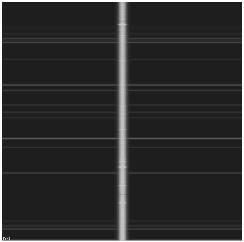
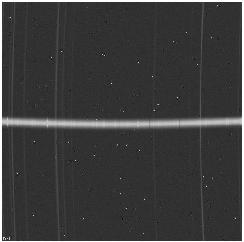
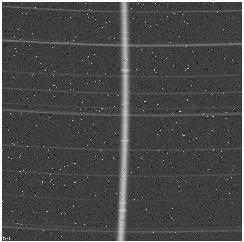
Examples 2, 3, and 4
OH DATABASE:
Compiled by Kim Ennico at kennico@ast.cam.ac.uk.
Last modified: 4 December 1997.
Further information can be found at ohsky/database.txt inside synthspec
directory




